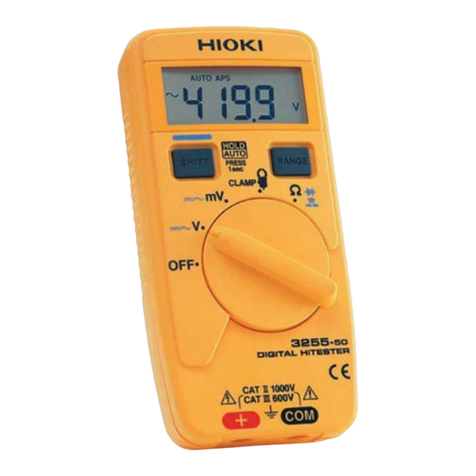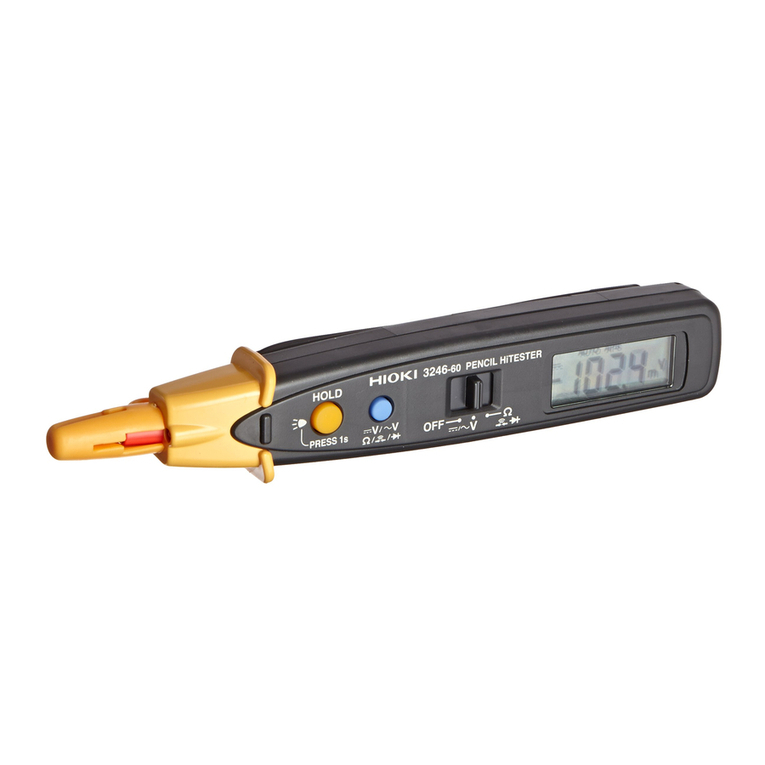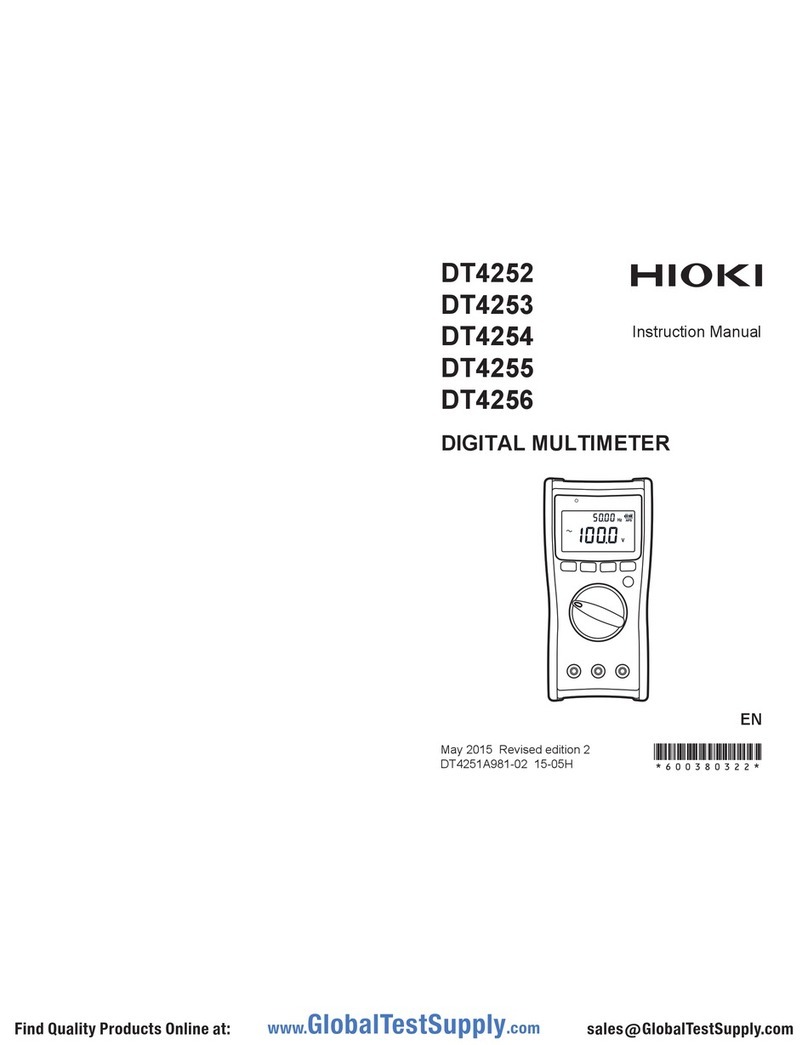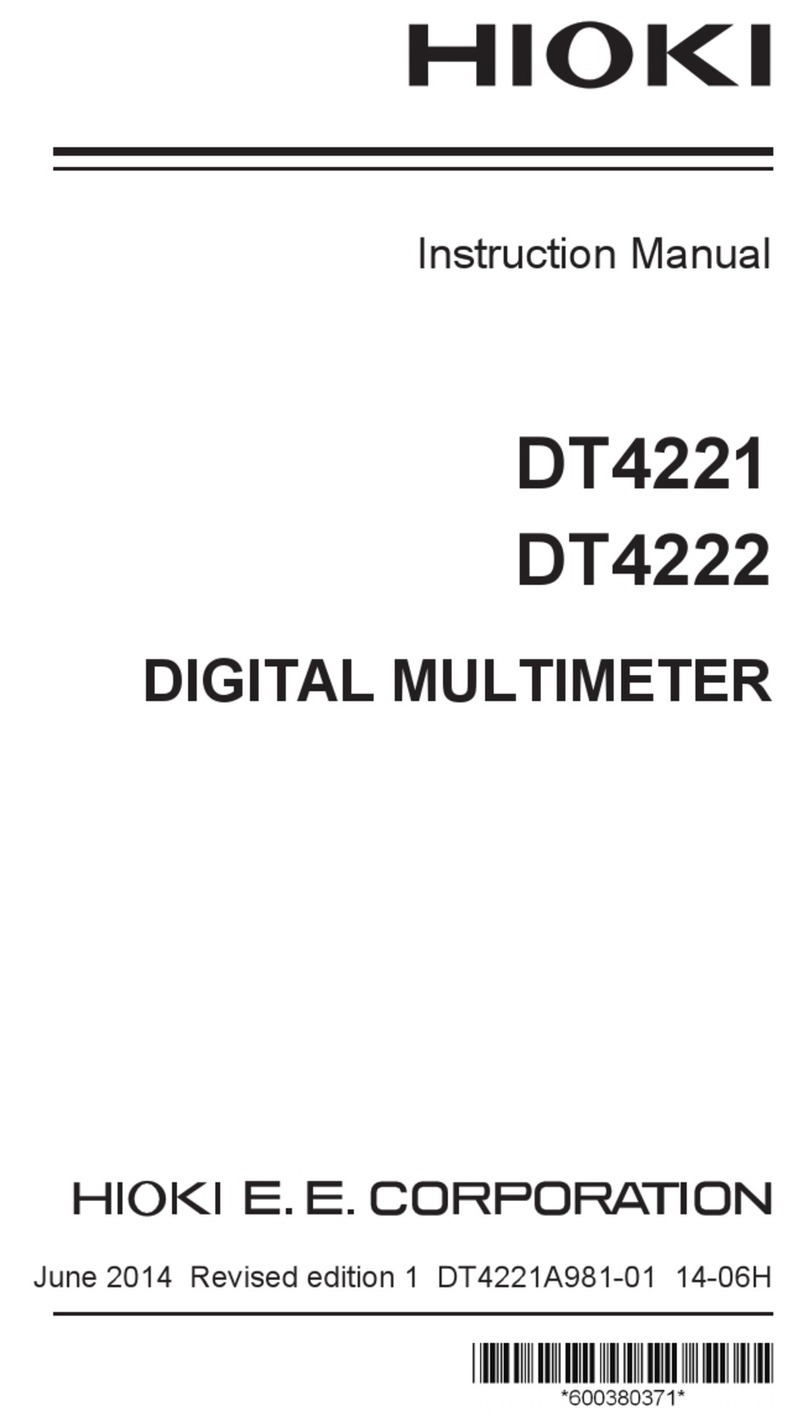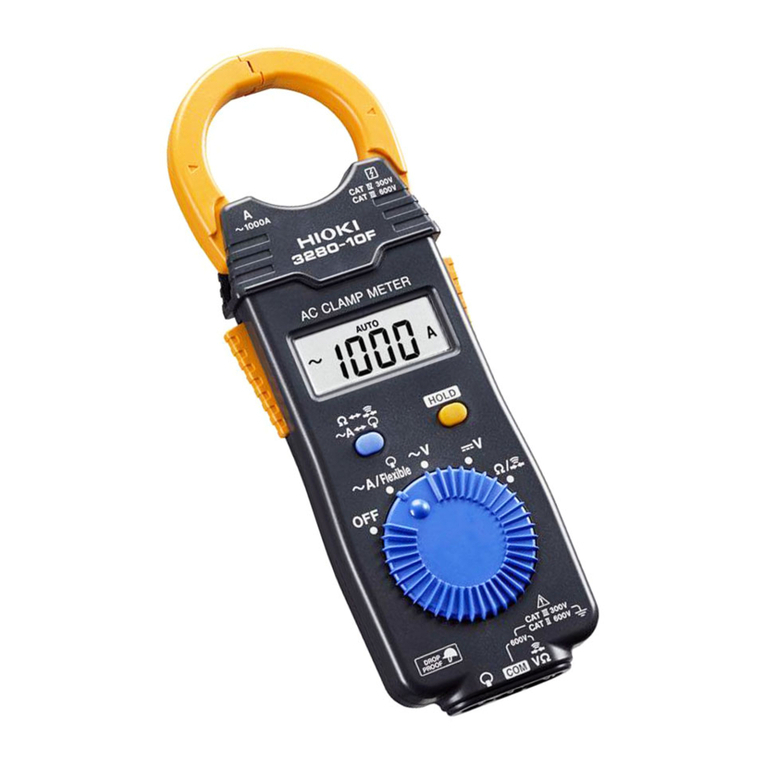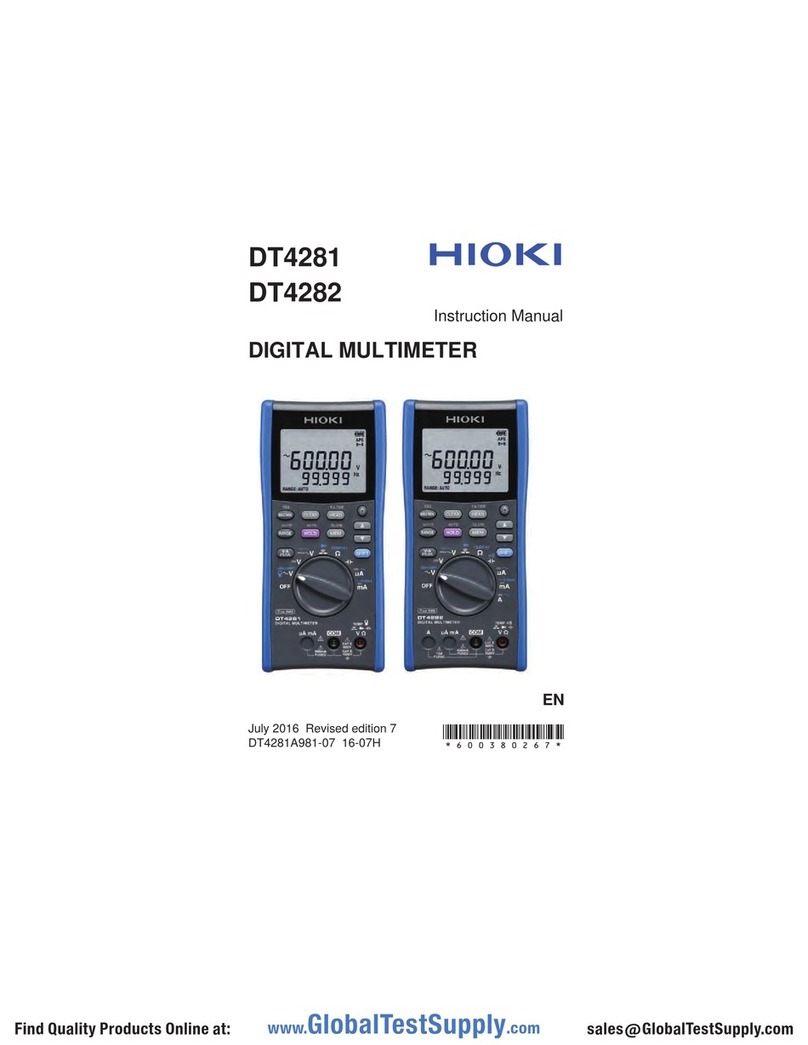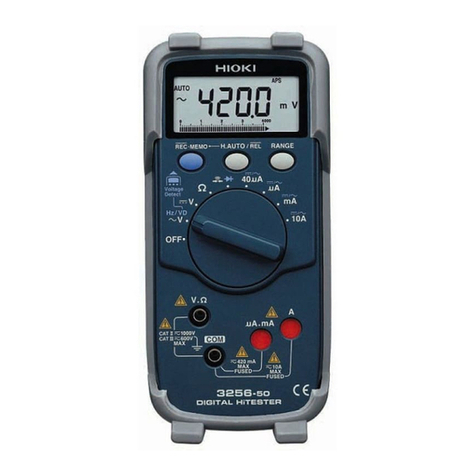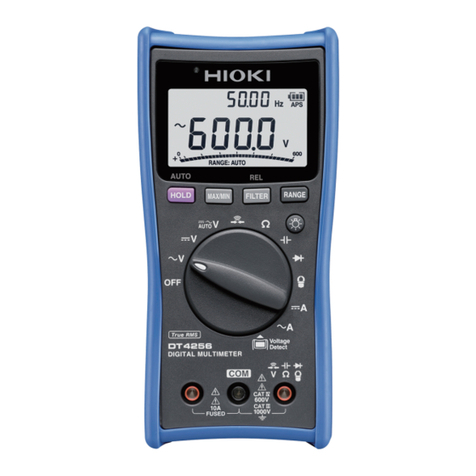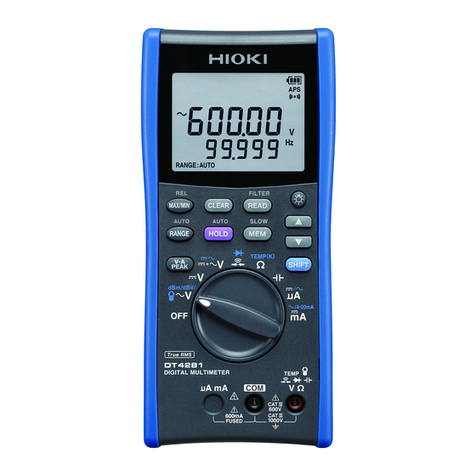
i
Contents
Introduction.........................................................................1
Verifying Package Contents..............................................1
Options (sold separately) ..................................................2
Safety Notes........................................................................4
Usage Notes........................................................................8
1 Overview 15
1.1 Overview and Features.................................15
1.2 Parts Names and Functions.........................16
1.3 Display ...........................................................21
2 Preparation for Measurements 23
2.1 Measurement Workflow................................23
2.2 Inserting/Replacing Batteries ......................24
2.3 Using Test Leads...........................................26
3 Performing Measurements 29
3.1 Inspection Before Use ..................................29
3.2 Measuring Voltage.........................................33
Measuring AC voltage...............................................33
Measuring DC voltage..............................................34
3.3 Measuring Resistance ..................................35
3.4 Measuring Diode ...........................................36
3.5 Checking Continuity .....................................37
3.6 Measuring Electrostatic Capacities.............38
3.7 Measuring Frequencies................................39
3.8 Measuring Duty Ratio ...................................40
3.9 Measuring Current ........................................41
Measuring DC/AC.....................................................41
Ind.Appx.
7
6
5
4
3
2
1


